- Cirque du Soleil’s “Crystal” at Fishers Event Center, a photo preview
- The Gatlin Brothers at Brown Country Music Center
- The Black Keys will perform at Innings Festival, Feb 21.
- Gary Clark Jr. will rock the Innings Festival 2025
- Fall Out Boy to appear at Innings Festival in February
- Kris Kristofferson passes away at 88
Lynyrd Skynyrd Urban Legend
#halloween
On October 20, 1977, Lynyrd Skynyrd’s plane went down near McComb, Mississippi. Following a performance at the Greenville Memorial Auditorium in Greenville, South Carolina, the band boarded a chartered Convair CV-240 bound for Baton Rouge, Louisiana, where they were scheduled to appear at LSU the following night. After running out of fuel the pilots attempted an emergency landing before crashing in a heavily forested area five miles northeast of Gillsburg, Mississippi. Rescuers had to cross a 20-foot-wide, waist-deep creek and dig through an overgrown forest while digging out rescue vehicles that got stuck in the mud. Locals worked with rescue officials and drove victims to the hospital in the back of pick-up trucks. One local resident recalled, “I found someone on the ground alive. When I walked to the other side of the plane, I tripped on another person.”
Among the dead were lead singer Ronnie Van Zant, guitarist Steve Gaines and Steve’s sister Cassie, traveling along as a Honkette – part of Skynyrd’s backing vocalists. Road manager Dean Kilpatrick and the aircraft’s two pilots also perished in the crash. The rest of the band and crew – 20 in all – survived serious injuries but struggled in the following years. Many found themselves battling with debilitating drug addictions, divorce, suicide, and even murder – things were never as free for those birds again.
The accident came just three days after the release of Street Survivors and five shows into their most successful headlining tour. The original cover sleeve for Street Survivors had featured a photograph of the band standing on a city street with all its buildings engulfed in flames, some near the center nearly obscuring Steve Gaines’s face. After the plane crash, this cover became highly controversial and out of respect for the deceased (and at the request of Teresa Gaines, Steve’s widow), MCA Records withdrew the original cover and replaced it with a similar image of the band against a simple black background, which was on the back cover of the original sleeve.
Ronnie Van Zant, then 29, had declared on several occasions that he would not live to see his 30th birthday. He had repeated this very matter-of-factly to his friends, family, journalists, and audiences worldwide. In an interview by Jim Farber, three months before the plane crash, he touched on this by saying, “I wrote [That Smell] when Gary had his car accident. It was last year, and Allen and Billy also were in car accidents all in the space of six months. I had a creepy feeling that things were going against us, so I thought I’d write a morbid song.” Ronnie’s friends and family always thought he possessed some extrasensory perception and said as much on the record. Ronnie’s father, Lacy Van Zant thought Ronnie knew more than a little and told Jaan Uhelszki in 1995 that “Ronnie was the only one of my children who had second sight.”
At Van Zant’s funeral, his casket was closed to viewers. This fueled the urban legend that Van Zant was so disfigured during the crash it was impossible to view his body. As it turns out, the closed casket was due to more mundane and personal reasons. Van Zant’s widow, Judy, requested it by recalling her husband talking about what he’d like (and wouldn’t like) at his funeral. One thing he specifically mentioned was that he didn’t like the idea of people “gawking” over him and she honored his wishes.
After the plane crash, the remaining members said that Lynyrd Skynyrd was finished, with Collins stating, “Some people are telling us we should keep the name because it obviously has value since people recognize it. To hell with them.”
In 1980, Rossington, Collins, Powell, and Wilkeson formed the Rossington-Collins Band, but they later decided to revive Lynyrd Skynyrd with the addition of Johnny Van Zant.











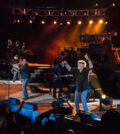
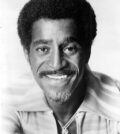
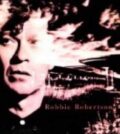
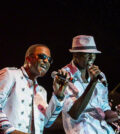
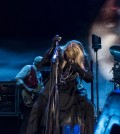




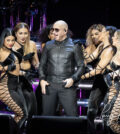
0 comments